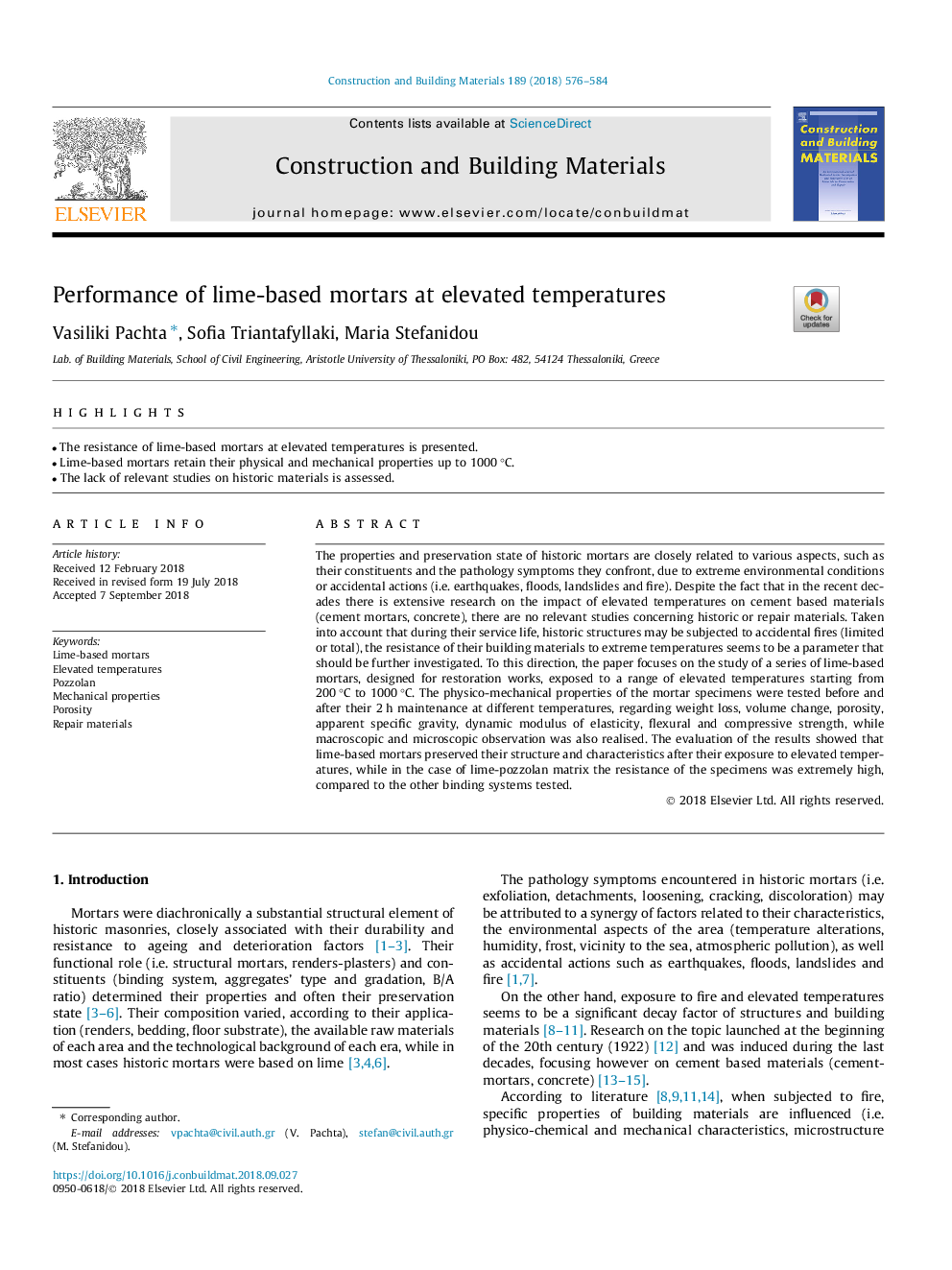| Article ID | Journal | Published Year | Pages | File Type |
|---|---|---|---|---|
| 10145711 | Construction and Building Materials | 2018 | 9 Pages |
Abstract
The properties and preservation state of historic mortars are closely related to various aspects, such as their constituents and the pathology symptoms they confront, due to extreme environmental conditions or accidental actions (i.e. earthquakes, floods, landslides and fire). Despite the fact that in the recent decades there is extensive research on the impact of elevated temperatures on cement based materials (cement mortars, concrete), there are no relevant studies concerning historic or repair materials. Taken into account that during their service life, historic structures may be subjected to accidental fires (limited or total), the resistance of their building materials to extreme temperatures seems to be a parameter that should be further investigated. To this direction, the paper focuses on the study of a series of lime-based mortars, designed for restoration works, exposed to a range of elevated temperatures starting from 200â¯Â°C to 1000â¯Â°C. The physico-mechanical properties of the mortar specimens were tested before and after their 2â¯h maintenance at different temperatures, regarding weight loss, volume change, porosity, apparent specific gravity, dynamic modulus of elasticity, flexural and compressive strength, while macroscopic and microscopic observation was also realised. The evaluation of the results showed that lime-based mortars preserved their structure and characteristics after their exposure to elevated temperatures, while in the case of lime-pozzolan matrix the resistance of the specimens was extremely high, compared to the other binding systems tested.
Related Topics
Physical Sciences and Engineering
Engineering
Civil and Structural Engineering
Authors
Vasiliki Pachta, Sofia Triantafyllaki, Maria Stefanidou,
